Introduction to Anchorage
Anchorage, Alaska, is a city that defies easy classification. It’s not a bustling metropolis in the traditional sense, but with nearly 300,000 residents, it is by far Alaska’s largest city, home to almost half of the state’s population. Situated in Southcentral Alaska at the head of Cook Inlet, Anchorage is a commercial hub surrounded by a wild and untamed landscape.
Overview of Anchorage, Alaska
Anchorage sits on a coastal plain, bordered by the Chugach Mountains to the east and the waters of Cook Inlet to the west. This unique geography means that within a short drive, you can transition from a vibrant downtown core with a diverse dining and arts scene to a rugged wilderness filled with glaciers, bears, and moose. The city is a major transportation hub, with a bustling port and an airport that serves as a key stop for international cargo and a gateway to remote parts of Alaska.
Why Anchorage is a Unique Destination
Anchorage’s appeal lies in its unparalleled blend of urban amenities and raw, natural beauty. It’s a city where you can:
- Experience Wildlife and City Life: It’s not uncommon to see a moose wandering through a suburban neighborhood or even downtown, and bald eagles are a common sight. You can fish for salmon in Ship Creek, which runs right through the city, and then head to a world-class restaurant for dinner.
- Access the Wilderness: On a clear day, you can see six different mountain ranges from Anchorage, including the majestic Denali. The city is surrounded by Chugach State Park, one of the largest state parks in the United States, offering endless hiking, biking, and skiing opportunities just minutes from the city center.
- Serve as a Basecamp: Anchorage is the ideal starting point for exploring Alaska. From here, you can take a day cruise to see calving glaciers, fly to a remote bear-viewing location, or start a scenic drive down the famous Seward or Glenn Highways.
Table of Contents
History of Anchorage
Anchorage’s history is a captivating tale of a planned city that boomed in response to some of the 20th century’s most significant events, transforming it from a simple tent city into Alaska’s largest urban center.
Early Settlement and Indigenous Heritage
The area that is now Anchorage is the traditional homeland of the Dena’ina Athabascan people. For centuries, they lived and thrived in the region, with villages and trading routes throughout the area, including a prominent fishing camp at the mouth of Ship Creek, which is now the heart of downtown. The Dena’ina people had a deep knowledge of the land, using its resources to sustain their communities. The name of Ship Creek, Dgheyay Kaq’, means “stickleback creek” in the Dena’ina language, reflecting its importance as a place for catching fish.
Growth During the Railroad and Oil Boom
Anchorage’s modern history began in 1914 when it was chosen as the headquarters for the construction of the Alaska Railroad. The federal government platted a townsite, and what began as a chaotic tent city filled with railroad workers quickly grew into a planned community. The railroad was completed in 1923, linking Anchorage to the interior and cementing its status as a vital hub.
The next major boom came with the discovery of oil. In the late 1950s, a major oil field was discovered on the Kenai Peninsula, and in the 1970s, the discovery of the Prudhoe Bay oil field on Alaska’s North Slope led to the construction of the Trans-Alaska Pipeline. Anchorage became the headquarters for the oil companies, and the influx of workers and wealth fueled a period of massive growth. The city’s skyline was dramatically altered with the construction of high-rise office buildings, and the population swelled as people flocked north seeking opportunity.
Modern Development and Economy
Today, Anchorage’s economy has diversified while still leaning heavily on its historical pillars. It remains a key strategic location for the military, with Joint Base Elmendorf-Richardson playing a vital role. The city’s airport is a global hub for air cargo, connecting Asia to North America and Europe. Tourism has also become a major economic driver, with Anchorage serving as the “basecamp” for millions of visitors each year who arrive by air, land, and sea. While oil and gas remain significant, modern development has also focused on other sectors like healthcare and logistics, making Anchorage a more resilient and dynamic city.
Geography & Climate
Anchorage’s unique climate and stunning geography are what make it such a compelling destination, offering a different experience in every season.
Location in Alaska and Natural Surroundings
Anchorage is located in Southcentral Alaska, at the head of Cook Inlet. It is bordered by the Chugach Mountains to the east and two tidal inlets, Knik Arm and Turnagain Arm, to the north and south. This strategic location means the city is a natural hub, nestled between major mountain ranges, vast wilderness, and the sea. The Chugach Mountains act as a natural barrier to the east, keeping the city’s climate slightly milder than the interior of Alaska. To the west, the coastal lowlands stretch to the mudflats of Cook Inlet, which are known for having some of the highest tides in the world. This blend of mountains, glaciers, and marine ecosystems creates a rich environment for a wide variety of wildlife, from moose and bears to beluga whales and salmon.
Seasonal Weather Patterns
Anchorage has a subarctic climate with four distinct seasons.
- Summer (June – August): Summers are generally cool and mild. Average high temperatures range from the mid-60s to the low 70s Fahrenheit (18-22°C), but it’s not uncommon to see warmer days. The most notable feature of an Alaskan summer is the long daylight hours, with the sun setting around midnight near the summer solstice in June.
- Fall (September – October): Fall is a brief but beautiful season. The days shorten, and temperatures drop, but the landscape is painted in vibrant autumn colors. This is also a good time to see wildlife preparing for winter.
- Winter (November – March): Winters are long, cold, and snowy. Average high temperatures are in the 20s Fahrenheit (-5°C), and lows are in the teens. While it’s cold, the humidity is low, and the air is often crisp and clear. The city is transformed into a winter wonderland, with heavy snowfall and frozen lakes, offering opportunities for skiing and other winter sports.
- Spring (April – May): Spring is a transition period. The snow begins to melt, and the days get longer. The landscape can be very muddy during this time, but the city comes to life as the plants and animals reawaken.
Best Time to Visit Anchorage
The “best” time to visit Anchorage depends on what you want to do.
- Summer (June – August) is the most popular time for visitors. The weather is at its best, all tours and attractions are open, and the long daylight hours allow for extended days of exploration.
- The “shoulder seasons” of May and September are great for those looking for fewer crowds and lower prices. May is one of the driest months, and September offers a chance to see the fall colors and, if you’re lucky, the start of the Northern Lights season.
- Winter (November – March) is the ideal time for travelers interested in winter sports like skiing, snowshoeing, and dog sledding. It is also the prime season for viewing the aurora borealis, though Anchorage’s city lights can make viewing difficult without traveling outside of the city.
Things to Do in Anchorage
Anchorage is a city built for adventure, with an incredible range of outdoor activities right on its doorstep. Whether you’re looking for a leisurely stroll or a heart-pumping expedition, you’ll find it here.
Outdoor Adventures
Anchorage’s “urban wilderness” provides easy access to a variety of natural playgrounds.
- Hiking Trails and Nature Walks: With over 300 miles of paved and unpaved trails, Anchorage is a hiker’s paradise.
- Flattop Mountain Trail: As one of the most popular hikes in Alaska, the trail to the summit of Flattop Mountain offers a challenging climb and a rewarding panoramic view of Anchorage, the Cook Inlet, and the surrounding mountains.
- Tony Knowles Coastal Trail: This 11-mile paved trail winds along the coast of Cook Inlet, offering stunning views of the water and the Alaska Range. It’s perfect for a scenic walk, a bike ride, or a jog.
- Chugach State Park: Just a few miles from downtown, this massive state park has endless hiking opportunities, from easy, family-friendly walks to strenuous all-day treks.
- Wildlife Viewing Opportunities: Anchorage is one of the few places in the world where urban and wild life coexist so closely.
- Moose and Eagles: It’s common to spot moose grazing in local parks or even in residential areas. Bald eagles are a frequent sight, often perched on trees or light poles.
- Potter Marsh: Located on the Seward Highway just south of the city, this boardwalk trail is a prime spot for birdwatching, where you can see a variety of migratory birds and sometimes even a moose or a beaver.
- Alaska Wildlife Conservation Center: For guaranteed sightings of iconic Alaskan animals like bears, bison, musk ox, and wolves, this conservation center is a popular and educational day trip from Anchorage.
- Fishing, Kayaking, and Skiing:
- Fishing: You can try your luck at fishing for king and silver salmon in Ship Creek, which runs right through downtown Anchorage. The city’s many lakes are also stocked with trout. For a bigger catch, book a guided trip to one of the nearby famous rivers like the Kenai or the Gulkana.
- Kayaking: Kayaking is a great way to experience Alaska’s waterways. You can rent a kayak to paddle on local lakes like Eklutna Lake, or take a guided tour to see calving glaciers in Prince William Sound or Resurrection Bay, a short drive or train ride from Anchorage.
- Skiing: In the winter, Anchorage transforms into a winter sports hub. There are several ski areas right in or near the city, including Alyeska Resort in Girdwood, which is known for its steep terrain and abundant snowfall. For cross-country skiing, the city’s extensive trail system is groomed throughout the winter, providing miles of free trails.
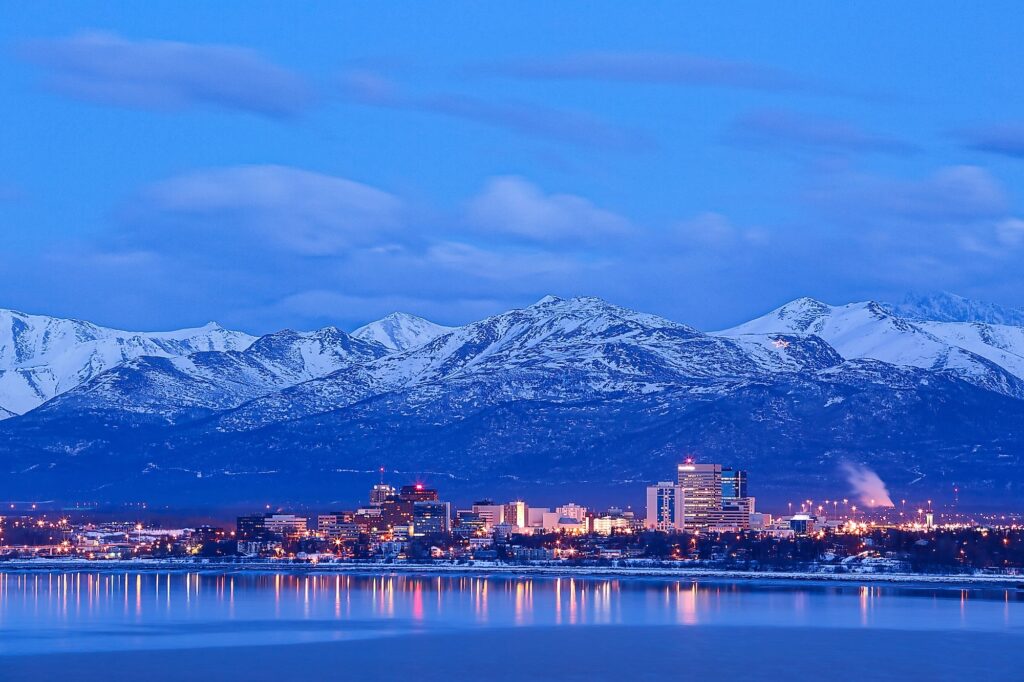
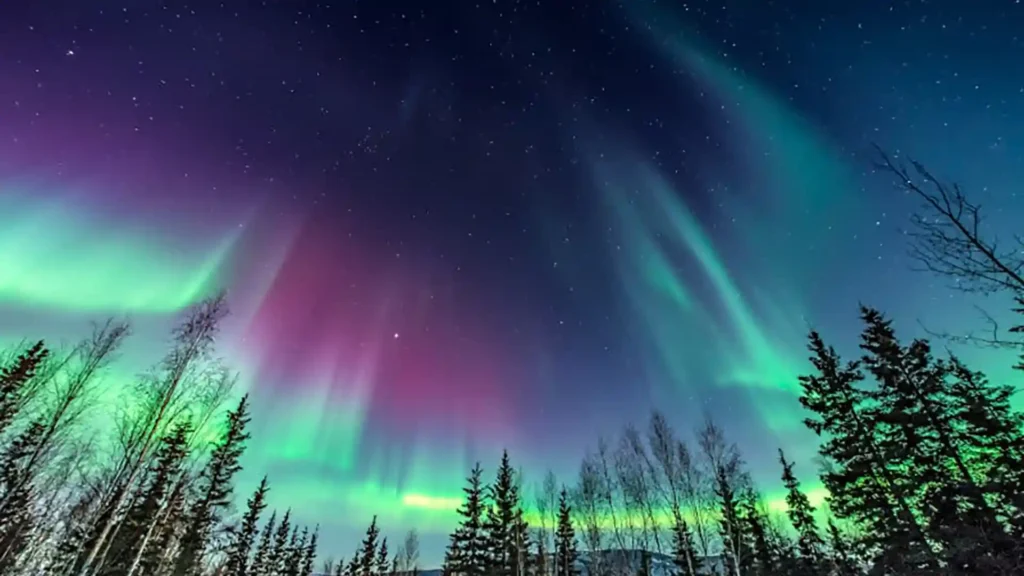
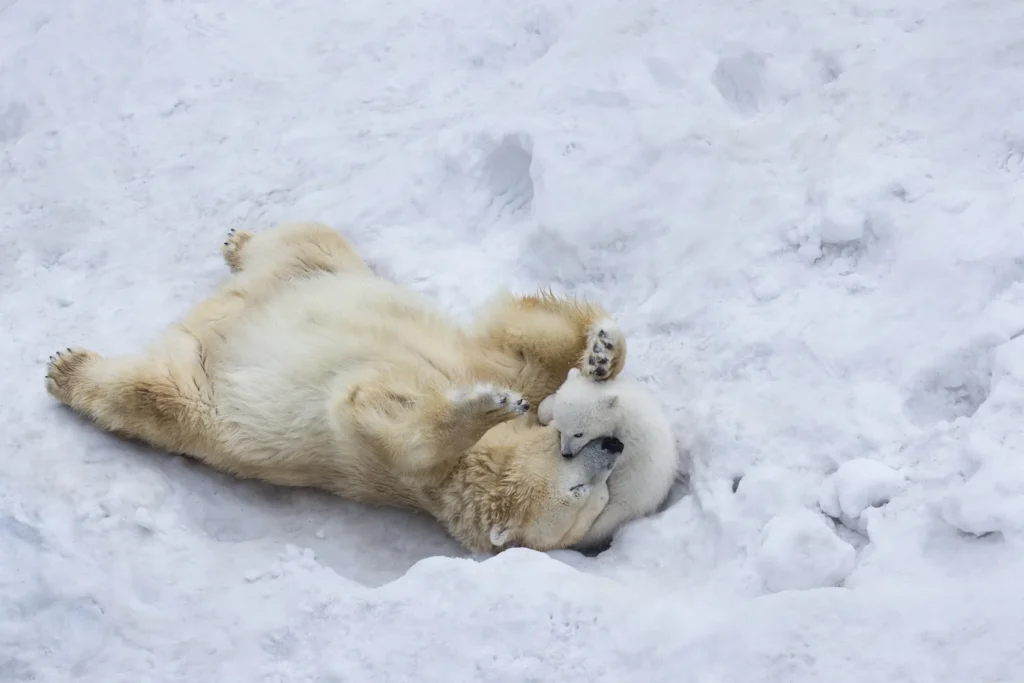
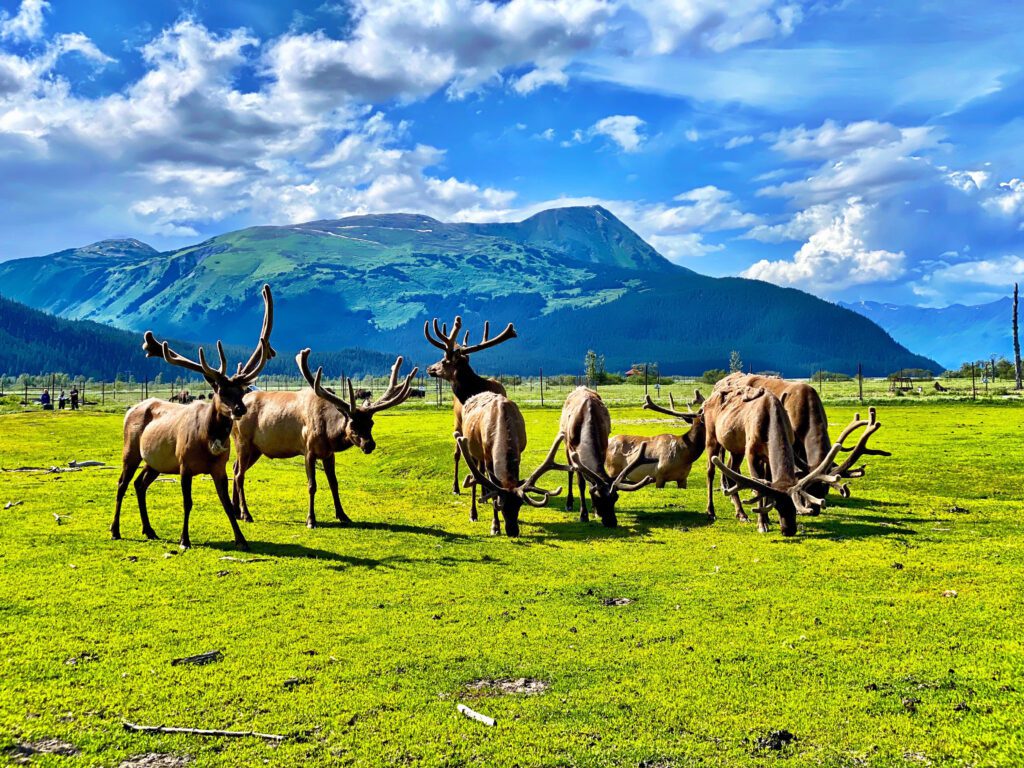
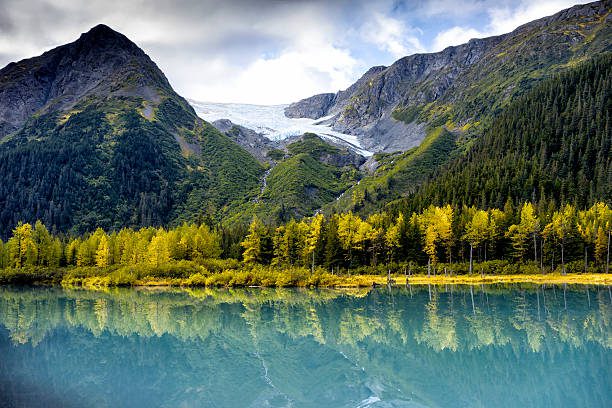
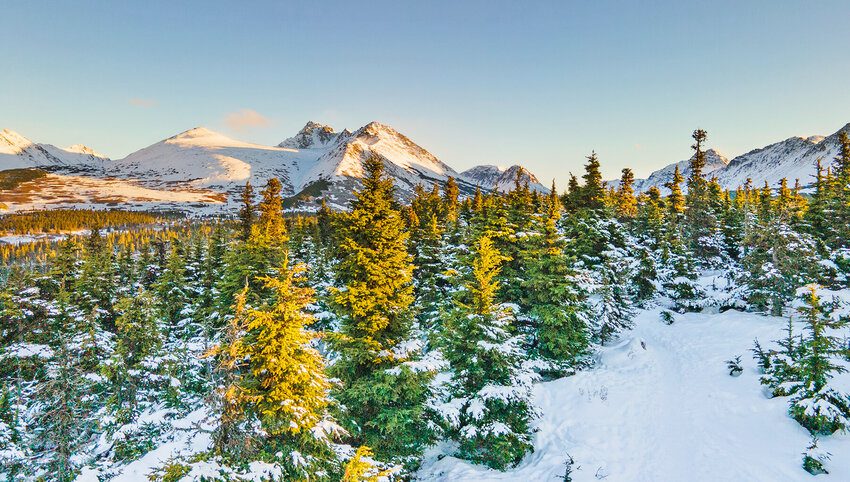
Cultural Attractions
Beyond its stunning natural beauty, Anchorage is a vibrant cultural hub with a diverse and thriving arts scene. From world-class museums to intimate theaters, there’s a wide array of attractions that celebrate Alaska’s unique heritage and creative spirit.
Museums and Art Galleries
- Anchorage Museum: The premier cultural institution in the state, the Anchorage Museum is a must-visit. It’s a multidisciplinary museum that tells the story of Alaska through its history, art, and science. The museum features a significant collection of Alaska Native cultural objects on loan from the Smithsonian Institution, showcasing the rich history and artistry of Alaska’s indigenous peoples. Its Art of the North galleries and interactive Discovery Center offer something for visitors of all ages.
- Alaska Native Heritage Center: This living cultural center provides an immersive experience into the traditions, languages, and art of Alaska’s 11 major Native cultures. You can walk through life-sized replicas of traditional Native dwellings, watch dancing and storytelling, and meet Alaska Native artists and artisans as they demonstrate their crafts. The center is a powerful and educational way to learn about the state’s indigenous history and modern culture.
- International Gallery of Contemporary Art (IGCA): For a look at the modern art scene, the IGCA in downtown Anchorage is a great stop. It features thought-provoking exhibitions by local, national, and international artists, offering a glimpse into Alaska’s dynamic and forward-thinking creative community.
Anchorage Cultural Centers and Events
Anchorage’s calendar is packed with unique events that showcase the city’s lively spirit.
- Annual Festivals: The city is famous for its festivals, including the Fur Rendezvous (“Rondy”), a winter festival in February with events like the Running of the Reindeer and snow sculpture competitions, and the Iditarod Trail Sled Dog Race, which has its ceremonial start in downtown Anchorage in March.
- First Friday Art Walks: On the first Friday of every month, galleries, museums, and shops throughout downtown and midtown Anchorage host open houses with new art exhibits, often with live music and refreshments. This is a great way to experience the local arts scene.
- Anchorage Market & Festival: Held on weekends throughout the summer, this large outdoor market features hundreds of vendors selling locally made crafts, art, and food. It’s an excellent place to find unique Alaskan souvenirs.
Local Music and Performing Arts
Anchorage has a surprisingly robust performing arts scene, with a variety of venues and groups that host everything from major Broadway shows to local folk music.
- Alaska Center for the Performing Arts (PAC): Located downtown, the PAC is the state’s largest performing arts venue. It hosts a wide range of performances, including concerts by the Anchorage Symphony Orchestra, plays by local theater companies, and touring Broadway shows.
- Bear Tooth Theatrepub: This local favorite offers a unique movie-going experience, serving pizza and locally brewed beer in a theater setting. It also hosts live music concerts from national touring artists and local bands.
- Live Music Venues: For a taste of the local music scene, check out venues like Williwaw Social, a multilevel restaurant and bar with a popular music venue, or Humpy’s Great Alaskan Alehouse, which often features local bands and has a great selection of Alaskan craft beers.
Top Landmarks
Anchorage is home to a number of iconic landmarks that serve as excellent starting points for exploring the city’s rich history, diverse culture, and stunning natural scenery.
Anchorage Museum
As the largest museum in Alaska, the Anchorage Museum is a world-class institution that offers a comprehensive look into the history, art, and science of the North. It’s a place where you can spend an entire day and still not see everything. Highlights include:
- The Smithsonian Arctic Studies Center: A collaboration with the Smithsonian Institution that showcases a stunning collection of over 600 Alaska Native artifacts, including traditional clothing, tools, and ceremonial items.
- The Art of the North Galleries: Featuring works by Alaskan and circumpolar artists, these galleries provide a glimpse into how people have portrayed the unique landscape and life of the North.
- The Discovery Center: An interactive science center perfect for families, with hands-on exhibits about the Aurora Borealis, an earthquake simulator, and a planetarium.
Tony Knowles Coastal Trail
This is arguably Anchorage’s most famous and beloved landmark. The Tony Knowles Coastal Trail is a beautiful 11-mile paved trail that follows the coast of Cook Inlet, from downtown to Kincaid Park. The trail is a hub for walkers, runners, bikers, and in the winter, cross-country skiers. Along the way, you can:
- See Stunning Views: On a clear day, you can see across Cook Inlet to the Alaska Range and the majestic Mount Denali, as well as the unique, flat-topped Mount Susitna (known locally as “Sleeping Lady”).
- Spot Wildlife: The trail is a great place for wildlife viewing, with frequent sightings of moose, bald eagles, and a variety of seabirds. If you’re lucky, you might even spot beluga whales in the inlet.
- Explore Points of Interest: The trail passes through several significant spots, including Earthquake Park, which commemorates the devastating 1964 earthquake, and Point Woronzof, a popular spot for sunset viewing.
Alaska Native Heritage Center
Located just a short drive from downtown, the Alaska Native Heritage Center is a powerful and immersive living museum dedicated to the rich traditions of Alaska’s indigenous peoples. This is not just a place to look at artifacts; it’s a place to learn and engage.
- Village Sites: The center features life-sized replicas of traditional dwellings from various Alaska Native cultural groups surrounding a lake. Guided tours provide fascinating insights into their history, customs, and daily life.
- Live Demonstrations: Visitors can enjoy live performances of traditional Native dances, listen to storytelling, and watch demonstrations of Native games.
- Art and Culture: The Hall of Cultures showcases art and artifacts, while a gift shop and on-site artists provide an opportunity to purchase authentic, Native-made goods.
Based on my search, here are some hotels and resorts in Anchorage, categorized by luxury, mid-range, and budget-friendly options:
Luxury Accommodations
- Hotel Captain Cook: A well-known luxury hotel in downtown Anchorage with multiple restaurants, a fitness center, and stunning views of the city and mountains.
- The Historic Anchorage Hotel: A premier hotel in downtown Anchorage on the National Register of Historic Places, offering elegant rooms and upscale amenities.
- Alyeska Resort: A high-end ski resort located in Girdwood, a short drive from Anchorage. It features refined quarters, a spa, and mountaintop dining.
- The Wildbirch Hotel: A boutique hotel in downtown Anchorage that blends urban life with the Alaskan wilderness, offering views of the Chugach Mountains and Cook Inlet.
Mid-Range Options
- Hilton Anchorage: A contemporary hotel in downtown with an indoor pool, fitness center, and a relaxed on-site restaurant.
- Marriott Anchorage Downtown: A centrally located hotel with modern, spacious rooms and a restaurant.
- Embassy Suites by Hilton Anchorage: Known for its suite-style rooms and a complimentary breakfast.
- Crowne Plaza Anchorage-Midtown: An IHG hotel located in Midtown, offering comfortable rooms and amenities like a fitness center.
- The Lakefront Anchorage: A family-friendly hotel located on the shores of Lake Hood, offering views of floatplanes.
Budget-Friendly Stays
- Motel 6 Anchorage, AK – Midtown: A straightforward budget-friendly lodging option with free Wi-Fi, parking, and an airport shuttle.
- Merrill Field Inn: A motel offering budget-friendly comfort with free Wi-Fi, an on-site restaurant, and airport transportation.
- My Place Hotel – Anchorage, AK: A solid budget hotel in Midtown with kitchenettes in the rooms.
- Aspen Suites Hotel Anchorage North: An affordable hotel with free Wi-Fi and laundry facilities.
Based on my searches for “Alternative Stays” in Anchorage, here are some options:
Cabins and Lodges
While many cabins and lodges are outside the immediate city limits, there are several within a reasonable driving distance of Anchorage, offering a more rustic experience.
- Knik River Lodge: Located about an hour’s drive from Anchorage, this lodge offers deluxe cabins with scenic views.
- Alyeska Accommodations: Located in Girdwood, about 35 miles from Anchorage, these accommodations offer rooms, condos, and cabins with glacier views.
- Mooseberry Cabins: Situated on a private lakefront property in Willow, about 66 miles from Anchorage, offering RV spots and cabins.
- Alyeska Hideaway Log Cabins: These cabins in Girdwood are highly rated and offer amenities like wood stoves and hot tubs.
- Bird Creek Chalet: A peaceful cabin in Girdwood with a fireplace, wood stove, and mountain views.
- Expedia and Visit Anchorage are good resources for finding more options.
Airbnb and Vacation Rentals
Anchorage has a wide variety of vacation rentals, from apartments to private homes and chalets. Many of these offer unique amenities and locations.
- Magnificent View Chalet: A highly-rated chalet in Eagle River, a 30-minute drive from downtown Anchorage, with mountain views, a wood-burning stove, and a hot tub.
- Secret Spenard B&B: A recently updated unit with a new kitchen and modern finishes.
- Luxe Mountainside Chalet: A secluded three-bedroom chalet in the Chugach Mountains, ideal for outdoor enthusiasts.
- Creekside Cottage: A rental near downtown Anchorage and the Coastal Trail.
- Jody’s Lakehouse: A lakefront home with a hot tub on the deck.
Camping and RV Parks
For those who prefer to camp, there are several campgrounds and RV parks both in and around Anchorage.
- Centennial Campground: Located in east Anchorage, this campground has 84 sites (including RV sites with and without electricity, as well as tent sites) and is reservation-only.
- Anchorage Ship Creek RV Park: Just a few blocks from downtown Anchorage, this park offers full hook-ups, pull-thru sites, and laundry facilities.
- Golden Nugget RV Park: Another option in Anchorage, located about two miles east of downtown.
- Eagle River Campground: Part of Chugach State Park and located about 12 miles north of Anchorage, this campground is a popular choice for families.
- Public campgrounds: There are many other public campgrounds in the surrounding areas of Chugach State Park and Chugach National Forest, including Bird Creek Campground, Eklutna Lake Campground, and Porcupine Campground.
Food & Dining in Anchorage
Anchorage’s dining scene is a delicious reflection of its unique location, offering a blend of fresh, wild Alaskan ingredients and creative culinary talent. The city is a haven for food lovers, especially those seeking authentic local flavors.
Fresh Seafood (Salmon, Halibut, Crab)
Alaska is famous for its world-class seafood, and Anchorage is the perfect place to experience it fresh from the source. The city’s top restaurants pride themselves on serving a variety of fish caught in local waters, often within hours of being landed.
- Salmon: Alaska’s state fish, salmon, is a staple. You can find several species on the menu, including the rich King salmon, the flavorful Sockeye, and the mild Silver (Coho) salmon. Many restaurants serve it grilled, baked, or smoked.
- Halibut: Known for its firm, flaky texture and mild flavor, Alaskan halibut is a favorite. It is often served pan-seared or battered and fried as part of a classic fish and chips dish.
- Crab: Alaskan crab, particularly King crab and snow crab, is a must-try. Many seafood houses serve a “crab feast” with massive legs steamed to perfection, often served with a side of drawn butter.
Recommended Restaurants for Seafood:
- Simon & Seafort’s: An Anchorage institution known for its classic seafood dishes and stunning views of Cook Inlet.
- Orso: A popular choice for a more modern take on seafood, with an excellent wine list and a lively atmosphere.
- Glacier Brewhouse: A local favorite with a rustic, lodge-like feel, serving a variety of fresh seafood alongside their own craft beers.
Traditional Alaskan Dishes
Beyond the famous seafood, Alaskan cuisine features hearty, wild-caught game meats and locally foraged ingredients.
- Wild Game: Many menus feature wild Alaskan game, including dishes made from caribou, elk, bison, and moose. These meats are often prepared as burgers, roasts, or hearty stews.
- Smoked Salmon: Smoked salmon is a culinary tradition and can be found almost everywhere, from fine dining restaurants to local markets. It’s often served as an appetizer on a platter with cream cheese and crackers, or as a key ingredient in pasta or sandwiches.
- Fry Bread: A traditional Alaska Native dish, fry bread is a simple but delicious piece of fried dough, often served as a side or used as a base for tacos or other toppings.
- Berries: The long summer days produce a bounty of wild berries, including blueberries, raspberries, and the uniquely Alaskan lowbush cranberries and lingonberries, which are often used in pies, jams, and sauces.
Farm-to-Table Restaurants
While the growing season in Alaska is short, a burgeoning farm-to-table movement has taken root in Anchorage, with chefs sourcing ingredients directly from local farms and purveyors.
- South Restaurant + Coffeehouse: This popular spot is known for its focus on local and seasonal ingredients, featuring dishes with a contemporary Alaskan twist.
- Spenard Roadhouse: A funky, laid-back restaurant that offers creative comfort food and a menu that often highlights local products.
- Seward’s Folly: Located on Ship Creek, this restaurant offers dishes prepared with fresh, locally sourced ingredients and a menu that changes with the seasons.
From a quick salmon burger at a food truck to a multi-course tasting menu featuring wild Alaskan game, Anchorage offers a culinary journey that is as authentic and adventurous as the state itself.
Popular Restaurants & Cafes
Anchorage’s culinary scene is a vibrant mix of fine dining, local favorites, and a thriving coffee culture that reflects the city’s adventurous spirit.
Fine Dining Options
For a special evening, Anchorage offers several upscale restaurants that combine exquisite cuisine with impeccable service and often, stunning views.
- Simon & Seafort’s Saloon & Grill: An Anchorage landmark with incredible views of Cook Inlet and the Alaska Range. It’s a classic choice for fresh seafood and steaks.
- The Crow’s Nest: Located atop the Hotel Captain Cook, this French and American fine dining restaurant offers a truly elevated experience with panoramic views of the city and surrounding mountains.
- Jens’ Restaurant: A local gem known for its intimate atmosphere and elegant European-inspired cuisine, featuring a seasonal menu that highlights fresh, local ingredients.
- Seven Glaciers: A short tram ride up Mount Alyeska in Girdwood, this AAA Four Diamond-rated restaurant is famous for its creative Alaskan cuisine and dramatic glacier views.
Local Favorites
These are the places where locals go for a taste of the real Anchorage, known for their great food, lively atmosphere, and unique character.
- Moose’s Tooth Pub & Pizzeria: An Anchorage institution, Moose’s Tooth is a must-visit for its creative pizzas, wide selection of craft beer, and a lively, fun atmosphere. Be prepared for a wait, but it’s well worth it.
- Glacier Brewhouse: A popular spot for both locals and tourists, this restaurant and brewery serves up hearty Alaskan fare, including fresh seafood and wood-fired steaks, alongside its award-winning craft beers.
- Snow City Cafe: Famous for its fantastic breakfast and brunch, this vibrant and quirky cafe is a local staple. It’s known for its delicious eggs Benedict and creative pancake specials.
- Spenard Roadhouse: A funky and laid-back spot offering elevated comfort food with an Alaskan twist, this is a great place to go for a casual and delicious meal.
Coffee Culture in Anchorage
Anchorage has a deep-rooted coffee culture, with more coffee shops per capita than many other major US cities. Drive-through coffee stands are ubiquitous, but there are also many cozy cafes and roasters that are a central part of the community.
- Kaladi Brothers Coffee: The most famous local roaster in Alaska, Kaladi Brothers started as a single espresso cart and now has numerous cafes throughout the city. They are known for their air-roasted beans and a relaxed, community-focused atmosphere.
- The Kobuk: A downtown institution since 1915, The Kobuk is more than just a coffee shop. It’s a glimpse into old Anchorage, with its charming, antique-filled shop and cozy cafe.
- Black Cup: For the coffee connoisseur, Black Cup is a local roaster that takes its craft seriously, with a focus on single-origin beans and expertly brewed coffee.
Transportation in Anchorage
Getting around Anchorage is relatively easy, whether you arrive by air, road, or rail.
Getting to Anchorage (Air, Road, Rail)
- By Air: The primary way for most visitors to get to Anchorage is by air. The Ted Stevens Anchorage International Airport (ANC) is a major hub for both passenger and cargo traffic, with direct flights from many major U.S. cities and seasonal international flights.
- By Road: Anchorage is connected to the rest of Alaska by scenic highways. The Glenn Highway connects to the Mat-Su Valley and the Alaska Highway system, while the Seward Highway is a breathtakingly scenic drive that follows the Turnagain Arm south.
- By Rail: For a classic Alaskan travel experience, you can arrive by train on the Alaska Railroad. The railroad connects Anchorage to other key destinations like Seward, Talkeetna, and Fairbanks, with scenic routes that are famous for wildlife viewing.
Public Transportation Options
Anchorage has a public bus system, People Mover, which operates throughout the city. While it is a budget-friendly option, its routes and schedules may not be convenient for all tourist attractions, especially those outside the downtown core. For visitors relying on public transport, it’s best to check the route maps and schedules in advance.
Renting Cars and Guided Tours
- Renting a Car: Renting a car is the most popular choice for visitors who want the flexibility to explore at their own pace. All major car rental companies operate at the airport. Having your own vehicle allows you to easily take day trips to places like Portage Glacier, the Matanuska Glacier, or the scenic town of Girdwood.
- Guided Tours: For those who prefer not to drive, guided tours are an excellent option. Tour operators in Anchorage offer a wide range of activities, including city tours, day trips to the Alaska Wildlife Conservation Center, glacier cruises in Prince William Sound, and bus trips to Denali National Park. These tours often include transportation from your hotel, making for a stress-free and informative experience.
Living in Anchorage (for residents & expats)
Anchorage is a city of contrasts—urban and wild, modern and rooted in tradition. For residents and expats, this offers a lifestyle that is both challenging and incredibly rewarding.
Cost of Living
The cost of living in Anchorage is generally higher than the national average, a factor to consider for anyone planning a move.
- Housing and Rent Prices: Housing is the largest contributing factor to the higher cost of living. The average rent for an apartment in Anchorage is about $1,522 per month, though this can vary significantly by neighborhood and size. The overall cost of housing is approximately 33.4% more expensive than the U.S. national average.
- Utilities and Daily Expenses: Utilities, including heating and electricity, are also more expensive than the national average, particularly during the long, cold winter months. Daily expenses like groceries and transportation are also higher, with groceries being about 26.5% more expensive than the national average.
Job Market & Education
Anchorage’s job market is diverse, and the city is a major educational hub for the state.
- Major Industries and Employers: The economy is largely driven by a few key sectors. Healthcare is the largest job-producing sector, followed by government (including federal, state, and local), transportation and logistics (due to the international airport and port), and the oil and gas industry. The military presence at Joint Base Elmendorf-Richardson is also a significant economic driver.
- Schools, Colleges, and Universities: The Anchorage School District is the largest in the state. For higher education, Anchorage is home to several institutions, including the University of Alaska Anchorage (UAA), which is the state’s largest university and offers a wide range of undergraduate and graduate programs. Alaska Pacific University is a private liberal arts college, and there are also several vocational and career colleges.
Lifestyle & Community
Living in Anchorage means embracing a unique lifestyle that is deeply connected to the outdoors and a close-knit community.
- Safety and Healthcare: Like any major city, Anchorage has areas with higher crime rates, but it is generally considered a safe place to live. The city is home to several major healthcare facilities, including Providence Alaska Medical Center and the Alaska Native Medical Center, providing a high level of medical care for residents.
- Local Events and Festivals: The community calendar is filled with annual events that bring residents together, from the famous Fur Rendezvous winter festival and the ceremonial start of the Iditarod Trail Sled Dog Race to summer celebrations like the Summer Solstice Festival and the Girdwood Forest Fair. These events offer a sense of camaraderie and provide a great way to experience Alaskan culture.
- Outdoor Lifestyle Benefits: The most significant benefit of living in Anchorage is the unparalleled access to the outdoors. The city has an extensive trail system for hiking, biking, and cross-country skiing, and you can see wildlife right in your neighborhood. Residents can take advantage of the long summer days for hiking and fishing and the snowy winters for skiing and snowshoeing, making for a lifestyle that is active and connected to nature year-round.
Travel Tips for Anchorage
Planning a trip to Anchorage requires some practical considerations to ensure a safe and enjoyable experience, no matter the season.
Packing Essentials for Each Season
- Summer (June – August): Layering is key. Pack a lightweight, waterproof, and windproof jacket. Bring a fleece or wool sweater for insulation. Comfortable, waterproof hiking shoes are a must. Don’t forget bug spray, sunscreen, and sunglasses, as the sun is very strong.
- Winter (November – March): Proper winter gear is non-negotiable. Wear a waterproof, insulated jacket and pants. Layer with fleece, wool, or synthetic materials. A warm hat, insulated gloves, and a neck gaiter are essential. Boots should be waterproof and insulated. Traction cleats for your shoes are highly recommended for walking on icy sidewalks.
- Spring and Fall (April, May, September, October): These transitional seasons can be unpredictable. Be prepared for a mix of rain, sun, and even snow. Pack waterproof layers and sturdy boots. The weather can change in an instant.
Safety and Wildlife Precautions
- Be “Bear Aware”: Black bears and occasional brown bears live in the Anchorage area. If you encounter a bear, stay calm, do not run, and back away slowly. Do not leave food in your car or tent. When hiking, make noise to avoid surprising a bear.
- Moose Encounters: It is very common to see moose in Anchorage. While they may appear docile, they are wild animals and can be aggressive, especially if they have calves. Maintain a safe distance and never approach or feed them.
- Hiking Safety: Stick to marked trails. Inform someone of your hiking plans and expected return time. Carry a small first-aid kit, a headlamp, and water.
Budget Travel Tips
- Travel in the Off-Season: For lower prices on flights and accommodations, consider visiting during the shoulder seasons of May or September. You’ll still get great weather and plenty of daylight, but with fewer crowds.
- Eat Like a Local: Save money on dining by visiting local favorites like Moose’s Tooth, which offers great food at a reasonable price. Buy groceries and make your own meals, and take advantage of the many food trucks.
- Utilize Public Transportation: While limited, the People Mover bus system is a budget-friendly way to get around the city.
- Free Activities: Anchorage has a wealth of free activities, including hiking the Tony Knowles Coastal Trail, visiting the Alaska Wildlife Conservation Center on a self-guided tour (with a vehicle), and exploring the downtown area.
Conclusion
Anchorage is a city of adventure and contrasts, where a bustling urban environment meets a vast, untamed wilderness. Whether you’re planning a trip or considering a move, it offers an experience unlike any other.
Why Anchorage is Worth Visiting or Living In
For visitors, Anchorage is the perfect basecamp for an Alaskan adventure. It provides all the modern amenities you could want—from diverse dining and shopping to cultural attractions and museums—while also serving as a gateway to the state’s most iconic natural wonders. In a single day, you can explore a world-class museum, hike a mountain trail, and spot a moose in a city park. For residents, Anchorage offers a high quality of life with unparalleled access to outdoor recreation, a strong sense of community, and a unique lifestyle that is active and deeply connected to nature.
Quick Recap of Highlights
- Location: A unique urban center surrounded by mountains and sea.
- Activities: World-class hiking, fishing, and skiing, often minutes from your door.
- Wildlife: Unmatched opportunities to see moose, bald eagles, and other Alaskan animals.
- Culture: A vibrant arts scene with museums, festivals, and live music.
- Accessibility: A convenient hub for exploring the rest of Alaska by road, rail, or air.

